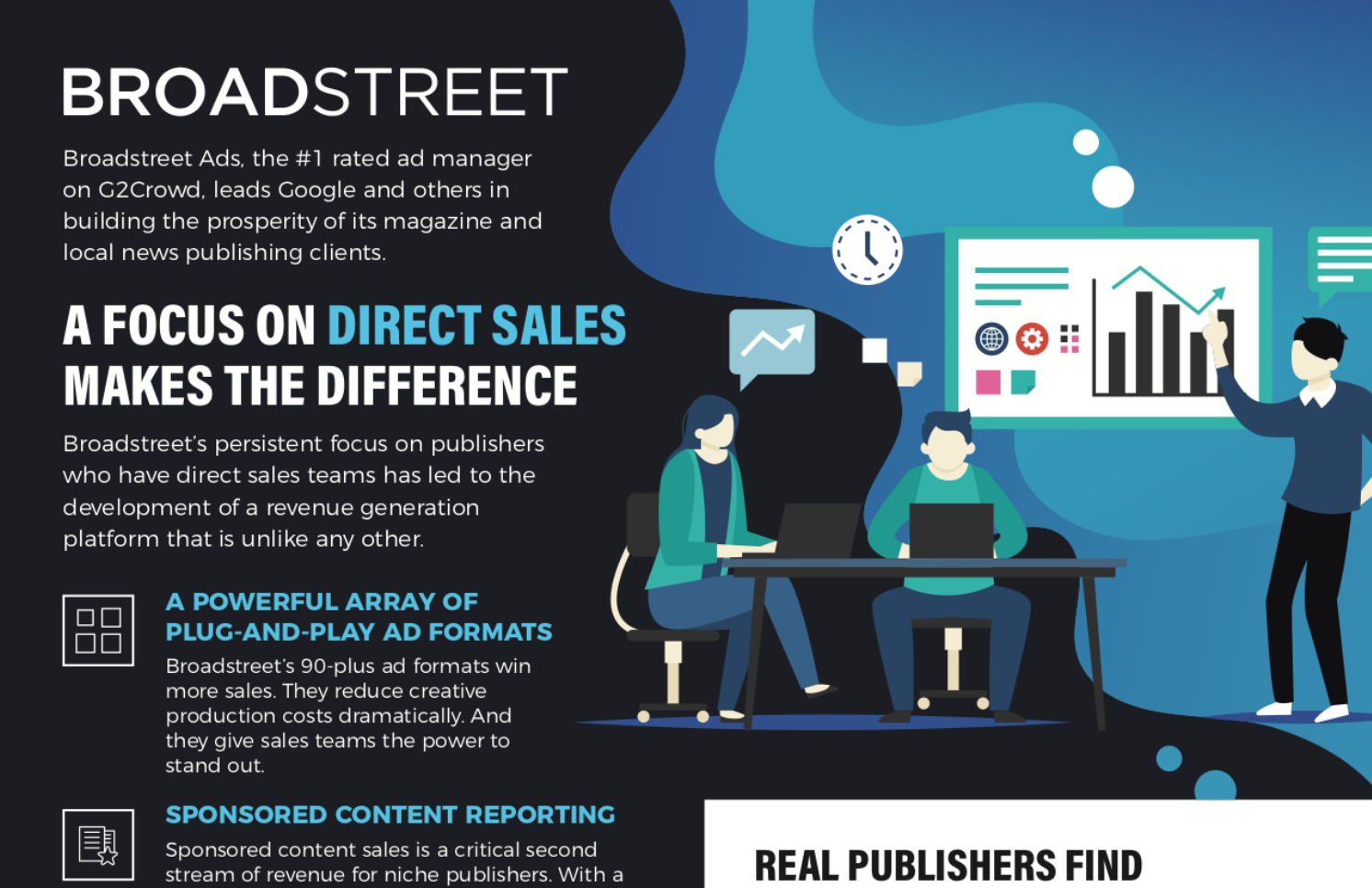How to Sell Ads: Sell Value and Differentiate
When it comes to online ad sales, creativity wins the day. Flexibility, creativity, and autonomy are three of a local ad salesperson’s greatest assets. By offering different advertising formats, local publishers signal to clients that they’re both flexible and serious about helping to achieve their campaign goals.
Never has this been more apparent than in today’s competitive market, where tech giants like Google and Bing are selling standard display ads for pennies on the dollar. Competing with self-serve vendors on pricing is a race to the bottom, and it’s a mistake that small publishers can’t afford to make.
Rather than competing on price, savvy independent publishers are differentiating themselves through autonomy, flexibility, and through the use of compelling creatives.
In Ten Advantages: How Magazine and Hyperlocal News Publishers Will Win In the Era of Facebook and Google, autonomy, flexibility, and creativity are listed among the biggest advantages that local publishers can leverage. Selling unique advertising formats, and various types of compelling solutions that actually lead to successful campaigns, is one of the most sure-fire strategies sales reps have at their disposal when pitching local businesses.
Let’s take a look at two fictional publishers and the advertising formats they offer.
Publisher A walks into a sales meeting with a local business selling standard 300×250 and 728×90 banner ads. It’s hard for Publisher A to feel confident, knowing that competing publishers with similarly sized audiences are all offering the same thing.
Publisher B walks into a sales meeting with that same local business owner. Unlike Publisher A, Publisher B isn’t selling standard display ads. Publisher B is offering the business owner an opportunity to purchase an entire image gallery on the publisher’s website. The gallery can be created with a logo and multiple high-res images, while still collecting impression and click data like an ordinary display ad. The image gallery isn’t designed to sit in the sidebar, where it can easily be overlooked. It goes directly into the main content column or in an article. Publisher B feels confident that his offerings are unique and provide a real value to the advertiser.
Which publisher would you rather be in this scenario?
We know standard display ads are ineffective. Worse still, they’re the exact same product Google is selling for pennies. Publishers who are still relying on standard banner ads can expect the floor to fall out eventually. It’s only a matter of time. Selling something that’s different—more prominent and creative—is the key to winning more sales in this competitive publishing environment.
The next step for most publishers is to question what’s possible from a technical perspective. A few of the dozens of ad formats we offer at Broadstreet include:
- Event Listings — Customizable ads that dynamically pull and display the events from any Facebook page
- Glossy Gallery — Elegant photo galleries that can be customized to any size. Designed for in-story and between page modules
- Slideshows — Image slideshows with an unlimited number of images and a configurable time delay in-between slides
- The Shoutout — Text-only ads that look like speech or chat bubbles
- Instant Instagram — Ads that pull in the latest content from a public Instagram feed and display the photo, caption, and optionally, comments
Although we’re proud to offer a number of customizable products here at Broadstreet, that’s not the point of this blog post. Stepping outside the box with compelling creative is beneficial, regardless of the ad platform a publisher uses.
According to our own statistics, large, crisp images can lead to a 5-10x increase in engagement over standard banners.
Real estate agents and firms, home remodelers, country clubs, and restaurants are all traditionally underserved by digital display advertising, making businesses in these verticals an especially lucrative market for online ad sales teams.
In our view, the three most important goals that should be met when selling new creative concepts to prospects are:
- Telling a compelling story, possibly with powerful images, engaging video, or sponsored content
- Encouraging users to engage in creative ways, without necessarily asking readers to “click here to learn more”
- Representing the client’s business or product, since prospects are ultimately going to make buying decisions based on whether they feel well represented
Online ad sales reps are always looking for an advantage, and flexible, compelling creatives offer just that. Not only do unique creatives lead to an increase in engagement, they also help salespeople separate themselves from the pack.
In the next article in this series, we’ll talk more about a specific type of flexible advertising—section sponsorships—which gives advertisers incredible prominence while simultaneously helping publishers maximize inventory.


